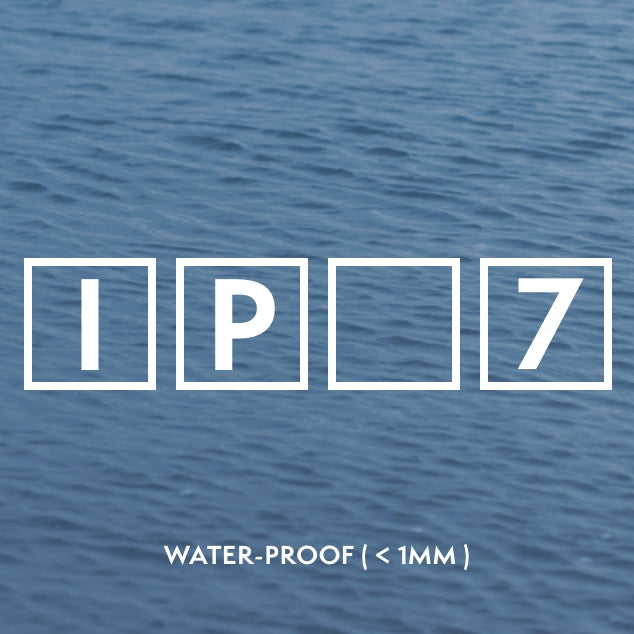IP ratings explained.
Your essential guide.
What are IP ratings? What do IP numbers mean? and why do they matter? All answered here.

What are IP ratings?

Why do they matter?
How do they work?
IP ratings, consist of an I (for ingress) and a P (for protection) followed by two numbers indicating the fixtures inbuilt level of resistance.
The first number (0-6) indicates resistance to solid particles, with '6' being 'dust-proof'. The second number (0-8) measures water resistance, where '8' signifies 'water-proof'.

















Recommended ratings.
| Area | Protection | IP |
| Outdoor | Water and dirt | IP44+ |
| Workspace | Dust | IP44+ |
| Bathroom | Moisture | IP44+ |
| Kitchen | Moisture | IP20+ |
| Dining Room | Basic | IP20 |
| Living Room | Basic | IP20 |
| Bedroom | Basic | IP20 |
| Office | Basic | IP20 |

Bathroom Zones.
Additionally, bathrooms can be divided into three zones, based on proximity to the various water sources:
Zone 0 - Lights
Lights submerged below water (e.g. in a bath), require a minimum IP rating of IPX7.
Zone 1 - Lights positioned directly above a bath or shower tray, require a minimum IP rating of IPX4.
Zone 2 - Lights fixed within 60cm of Zone 1 or of a sink, require a minimum IP rating of IPX4.
IP FAQs.
What does IP stand for?
Does IP-rating matter indoors?
Are higher IP-rated lights expensive?
What is the right IP-rating for my space?
Do you sell higher IP-rated lights?
Does IP-rating affect installation?

